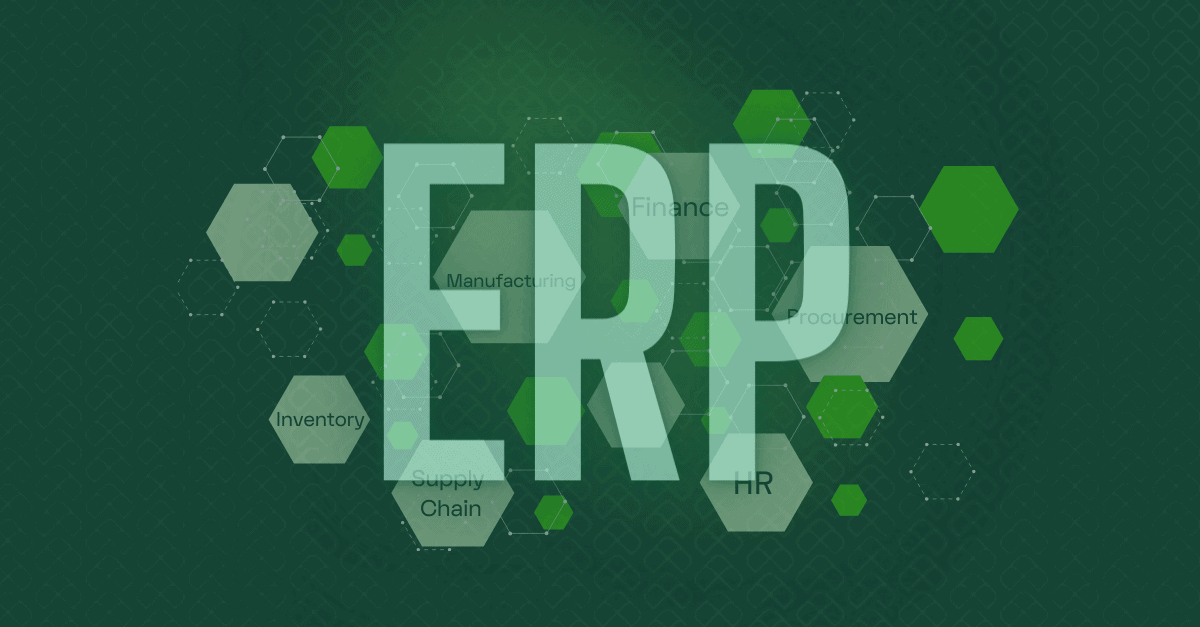Accurately recognizing revenue is crucial for business, but it’s not always straightforward.
The many challenges of proper revenue recognition aren’t just theoretical. They’re very real—and increasingly scrutinized. In 2023, the SEC intensified its efforts to crack down on accounting and auditing errors, with enforcement actions surging by 22%, compared to an 8% increase seen elsewhere.
This data highlights a critical fact: Revenue recognition is no longer merely a “nice to have” in ERP systems; it’s an absolute necessity for compliance and financial integrity.
So, what is an ERP system’s function in proper revenue recognition? Are all ERP revenue software options able to handle the complexities associated with it? This article will uncover the answers.
The Role of ERP Systems in Financial Management
Enterprise Resource Planning (ERP) systems have come a long way since their 1990s origins in manufacturing. Modern ERP tools often leverage integrated solutions, centralizing and automating critical business functions, such as:
- Inventory and supply chain management
- Financial and accounting operations
- Human Resources
In financial management, implementing ERP systems helps streamline otherwise time-consuming accounting tasks. This includes accounts payable and receivable, general ledger management, and generating financial reports.
The allure of the ERP is to consolidate these functions into a single platform, eliminating the need for disparate spreadsheets (and reducing the risk of costly mistakes from manual data entry).
However, as modern businesses have adopted more sophisticated pricing structures and selling motions, the capabilities of ERP have been strained beyond their means. The ERP is great for businesses with less complex revenue and few customer invoices and products.
But, for customers with more complex use cases, the ERP falls short. Accountants are left to figure out critical financial operations and reports by resorting back to spreadsheets and workarounds. Let’s take a deeper look at how this plays out for revenue recognition.
Understanding Revenue Recognition in ERP Systems
Revenue recognition is the process of recording revenue as it is earned. It is a crucial measure of any company’s financial health and a critical component of financial reporting, given accounting standards like ASC 606 and IFRS 15.
So, how does revenue recognition fit into the broader picture of ERP processes?
Honestly, not very well.
Most ERP vendors designed these systems in an era dominated by manufacturing companies that ran off one-time billings. Then, eCommerce and SaaS entered the scene with companies like eBay and Salesforce.
Revenue streams were relatively straightforward at that time, but as the proliferation of SaaS morphed into recurring subscription revenue, usage-based pricing, and services, ERP became less and less relevant to handling the needs of modern businesses.
As a result, the ERP software market still struggles with challenges such as:
- Modern revenue models that engage in multi-element arrangements, bundled products, and ongoing subscription services
- Data disconnects, such as upstream sales information (like orders and quotes) not being visible to accounting teams
- Contract modifications and the reallocation of revenue upon amendments
Due to these inherent limitations, many organizations manually recognize revenue and account for contract modifications in spreadsheets to meet increasingly complex revenue recognition requirements.
Such intervention increases the risk of errors and adds significant overhead in terms of time and resources, as data must often be restructured to fit within the confines of the ERP and general ledger.
How to Evaluate the Revenue Module in an ERP
We’ve established above that ERP systems comprise multiple modules. And legacy software rarely meets the demands of modern revenue scenarios.
Therefore, we consider it crucial to evaluate potential ERP solutions through the lens of revenue recognition capabilities.
To do so, consider whether your chosen solution offers:
- Business-specific solutions: Assess whether the module can handle your company’s unique revenue models, revenue recognition methods, and business applications. Consider how easy or difficult it is to configure your unique revenue methods.
- Versatile revenue management: Ensure your chosen module can manage different revenue streams, including usage-based, service-based, and hybrid models.
- User interface and reporting capabilities: Evaluate how easy it is to generate the reports needed for timely book closings. Consider whether you’re currently held back by having to pull and combine multiple reports.
- Scalability and future growth: Determine whether your chosen system can meet today’s needs—while establishing a framework that will scale to tomorrow’s.
- Ease of implementation: Consider the effort required to configure new revenue rules and adapt to changing accounting standards.
- Support quality: When speaking with customer support, assess whether you’re connected with revenue recognition experts who understand the software and the accounting standards behind them.
It’s fair to say that each of these numerous benefits is non-negotiable.
Notably, Gartner (the entity that first coined the term ERP) recently predicted that 70% of ERP initiatives will fail to fully meet their original business goals by 2027. Some 25% of these face the possibility of “catastrophic” failure, demonstrating that choosing the right system is more important than ever.
When the ERP Revenue Module Just Won’t Cut It: How RightRev Stands Out in Automating Revenue Recognition
Rather than retrofit a patchwork revenue recognition solution into your current ERP, simply implementing a parallel solution may be more efficient.
That’s where RightRev stands out. This revenue recognition solution is unique in several ways:
- Tailored for complexity: RightRev excels in managing high-complexity tasks such as bundled contracts, ramp deals, and contract modifications, which are often challenging for advanced cloud ERP systems.
- Advanced SSP analysis: The platform leverages historical data to accurately analyze and allocate Standalone Selling Prices (SSP), ensuring compliance and precision in revenue allocation.
- Configurable rules: With RightRev, you can configure rules to automate revenue processes, significantly reducing the need for IT intervention. This adaptability makes adjusting to changing business models or accounting standards easier.
- Real-time reporting: RightRev provides real-time revenue recognition, which gives you immediate insights into revenue streams and performance trends, streamlining financial closings and strategic planning.
- High Volume Transactions: RightRev is proven to handle high transaction volumes without sacrificing month-end performance. Whether you have hundreds or billions of transactions, our modern architecture can process them quickly.
With RightRev, users say they no longer need to combine multiple reports to get a clear picture of their revenue streams—a common pain point with ERP implementations like NetSuite ARM.
RightRev’s CEO, Jagan Reddy, leveraged his extensive experience in revenue recognition and ERP implementation to craft a platform that pinpoints challenges faced by finance teams. This strategic vision is central to RightRev’s sophisticated revenue management, enabling businesses to ensure compliance and efficiency effortlessly.
ERP the Right Way With RightRev
If your current ERP system’s revenue recognition module is struggling to keep up with your business’s needs, whether due to complex revenue models or inefficiencies in generating accurate reports, it may be time to consider a point solution like RightRev. Think of RightRev as an ERP’s powerful sidekick–where you can manage all of your revenue accounting and granular revenue metrics in RightRev while sharing revenue Journal Entries with the ERP.
RightRev is designed to integrate seamlessly with your existing tech stack, acting as a powerful revenue subledger that maximizes the value of your ERP. With a single solution, you can automate revenue recognition, reduce the need for manual adjustments, and gain real-time visibility into your financial health.Ready to take your revenue recognition to the next level? Contact RightRev today for a demo or consultation.




